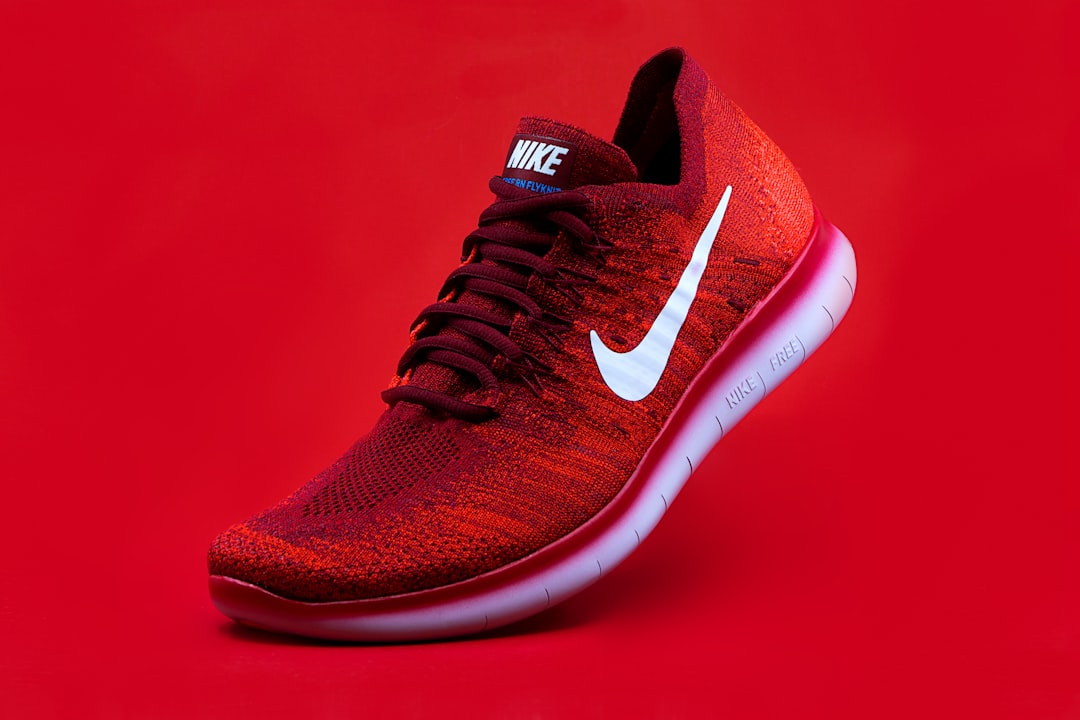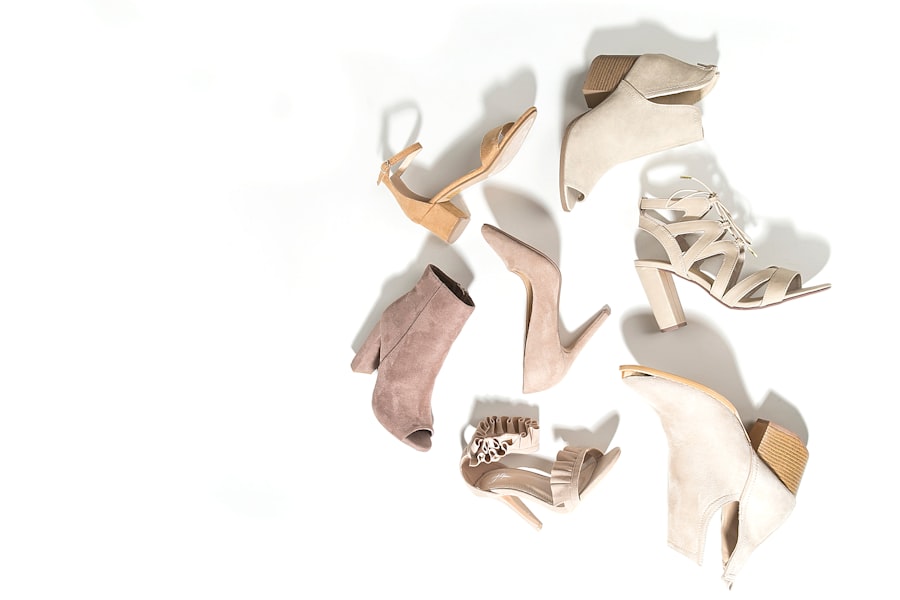Robot vacuums have revolutionized the way we clean our homes. These small, autonomous devices are…

Step into the Future with the Best Hiking Shoes of 2024: A Comprehensive Guide
Hiking shoes have come a long way since their inception. In the early days, hikers would simply wear their everyday shoes or boots when venturing into the great outdoors. However, as hiking became more popular and people began to explore more challenging terrains, the need for specialized footwear became apparent.
The first hiking shoes were made of leather and had thick soles for added durability. They were designed to provide protection and support for hikers as they traversed rugged trails and rocky terrain. Over time, hiking shoes evolved to include features such as waterproofing, improved traction, and lightweight materials.
Choosing the right hiking shoes is crucial for a successful hiking experience. Ill-fitting or inadequate footwear can lead to discomfort, blisters, and even injuries. It is important to consider factors such as durability, sustainability, comfort, fit, and the specific needs of your hiking adventure when selecting the right pair of hiking shoes.
Key Takeaways
- Hiking shoes have evolved over time to become more durable and sustainable.
- Comfort and fit are crucial factors to consider when choosing hiking shoes.
- Innovative materials and technologies are being used in hiking footwear to improve performance.
- Choosing trail-specific hiking shoes is important for a successful adventure.
- Style and design trends are also influencing the hiking shoe market.
Durability and Sustainability: Key Features of Future Hiking Shoes
Durability and sustainability are two key features that should be considered when choosing hiking shoes. Hiking shoes are subjected to harsh conditions such as rough terrain, extreme weather, and constant wear and tear. Therefore, it is important to invest in a pair of shoes that can withstand these challenges.
In recent years, there has been a growing emphasis on sustainability in the outdoor industry. Many companies are now using eco-friendly materials and manufacturing processes to reduce their environmental impact. This includes using recycled materials, reducing waste, and implementing sustainable practices throughout the production process.
Materials such as recycled rubber, organic cotton, and recycled polyester are being used in the construction of hiking shoes to make them more sustainable. Additionally, companies are incorporating technologies such as water-resistant coatings and reinforced toe caps to enhance durability.
The Importance of Comfort and Fit for Hiking Shoes
Comfort and fit are crucial factors when it comes to hiking shoes. Hiking can be a physically demanding activity, and having comfortable footwear can make a world of difference in your overall hiking experience.
A good fit is essential to prevent blisters, hot spots, and discomfort while hiking. Ill-fitting shoes can cause your feet to slide around inside the shoe, leading to friction and irritation. It is important to find a pair of hiking shoes that provide a snug fit without being too tight or restrictive.
When trying on hiking shoes, it is recommended to wear the same type of socks that you would wear while hiking. This will give you a more accurate feel for how the shoes will fit during your outdoor adventures. It is also important to try on both shoes and walk around in them to ensure they are comfortable and provide adequate support.
Innovative Materials and Technologies in Hiking Footwear
| Material/Technology | Description | Benefits |
|---|---|---|
| Gore-Tex | A waterproof and breathable membrane that is added to hiking footwear. | Keeps feet dry and comfortable in wet conditions. |
| Vibram | A high-performance rubber sole that provides excellent traction and durability. | Improves grip and stability on various terrains. |
| EVA Foam | A lightweight and flexible foam that is used in the midsole of hiking footwear. | Provides cushioning and shock absorption for the feet. |
| Cordura | A durable and abrasion-resistant fabric that is used in the upper of hiking footwear. | Protects the feet from rough terrain and extends the life of the footwear. |
| Merino Wool | A natural and breathable material that is used in the lining of hiking footwear. | Regulates temperature and wicks away moisture to keep feet dry and comfortable. |
In recent years, there have been significant advancements in the materials and technologies used in hiking footwear. These innovations have resulted in lighter, more durable, and more comfortable hiking shoes.
One of the most notable advancements is the use of Gore-Tex technology in hiking shoes. Gore-Tex is a waterproof and breathable membrane that is used to keep feet dry and comfortable in wet conditions. This technology allows moisture to escape from the shoe while preventing water from entering.
Another innovation in hiking footwear is the use of Vibram outsoles. Vibram is a high-performance rubber compound that provides excellent traction on various terrains. These outsoles are designed to grip the ground and provide stability, even on slippery surfaces.
Additionally, many hiking shoe manufacturers are incorporating lightweight materials such as EVA foam and mesh uppers to reduce weight without sacrificing durability or support.
Trail-Specific Hiking Shoes: Choosing the Right Pair for Your Adventure
Different types of hiking shoes are designed for specific terrains and activities. It is important to choose the right pair of shoes for your adventure to ensure optimal performance and comfort.
For light hiking on well-maintained trails, a low-cut hiking shoe or trail runner may be sufficient. These shoes are lightweight and provide good traction on flat or moderately uneven terrain. They are ideal for day hikes or shorter backpacking trips.
For more rugged terrain and longer backpacking trips, a mid-cut or high-cut hiking boot may be necessary. These boots provide added ankle support and protection from rocks and debris. They are designed to handle rough terrain and provide stability on uneven surfaces.
For hiking in wet conditions or crossing streams, waterproof hiking shoes or boots are recommended. These shoes have a waterproof membrane that keeps water out while allowing moisture to escape, keeping your feet dry and comfortable.
Style and Design Trends in Hiking Shoes

In recent years, there has been a shift in the style and design of hiking shoes. Hiking shoes are no longer just functional; they are also fashionable. Many outdoor brands are incorporating trendy designs and colors into their hiking shoe collections.
One of the current style trends in hiking shoes is the use of bright colors and bold patterns. Hiking shoes are no longer limited to earth tones; they now come in a variety of vibrant colors that allow hikers to express their personal style.
Another design trend in hiking shoes is the use of lightweight materials and sleek silhouettes. Hiking shoes are becoming more streamlined and less bulky, making them more versatile for everyday wear.
Style and design can also affect performance. For example, shoes with a wider toe box can provide more comfort and prevent blisters, while shoes with a narrower profile may offer better stability on rocky terrain.
Expert Reviews and Recommendations for the Best Hiking Shoes of 2024
When it comes to choosing the best hiking shoes, it can be helpful to consult expert reviews and recommendations. Hiking experts have tested and reviewed numerous hiking shoes to determine which ones offer the best performance, durability, and comfort.
Some of the top hiking shoes for 2024, according to experts, include the Salomon X Ultra 3 GTX, the Merrell Moab 2 Ventilator, and the La Sportiva TX4. These shoes are praised for their durability, traction, and overall performance on various terrains.
It is important to note that everyone’s feet are different, and what works for one person may not work for another. It is recommended to try on multiple pairs of hiking shoes and walk around in them to determine which ones feel the most comfortable and provide the best fit for your feet.
Hiking Shoes for Different Types of Terrain and Weather Conditions
Different types of terrain and weather conditions require different types of hiking shoes. It is important to choose the right pair of shoes that are suitable for the specific conditions you will be hiking in.
For rocky terrain, shoes with a sturdy outsole and a protective toe cap are recommended. These features will provide added traction and protection from rocks and debris.
For muddy or wet conditions, waterproof hiking shoes or boots with a grippy outsole are essential. These shoes will keep your feet dry and provide traction on slippery surfaces.
For hot weather, lightweight hiking shoes with breathable mesh uppers are ideal. These shoes will allow air to circulate around your feet, keeping them cool and comfortable.
For cold weather or winter hiking, insulated hiking boots with a warm lining are necessary. These boots will keep your feet warm and protected from the elements.
Caring for Your Hiking Shoes: Maintenance Tips and Tricks
Proper maintenance is essential to prolong the life of your hiking shoes. Taking care of your shoes will ensure that they continue to perform well and provide optimal comfort and support.
After each hike, it is important to clean your hiking shoes to remove dirt, mud, and debris. Use a soft brush or cloth to gently scrub away any dirt or stains. Avoid using harsh chemicals or abrasive materials that could damage the shoe’s materials.
Allow your hiking shoes to air dry after cleaning. Do not place them near a heat source, as this can cause the materials to warp or shrink.
It is also important to regularly inspect your hiking shoes for any signs of wear and tear. Check the soles for any signs of excessive wear, and inspect the upper for any rips or tears. If you notice any damage, it is best to repair or replace your shoes to prevent further damage and ensure your safety on the trail.
Embrace the Future of Hiking with the Best Footwear Available
In conclusion, choosing the right hiking shoes is crucial for a successful and enjoyable hiking experience. The evolution of hiking shoes has resulted in more durable, sustainable, comfortable, and stylish options for hikers.
Investing in quality hiking shoes that are suited to your specific needs and preferences will ensure that you are well-equipped for any adventure. Whether you are tackling rugged terrain, hiking in wet conditions, or exploring new trails, there is a pair of hiking shoes out there that will meet your needs.
Embrace the future of hiking by choosing the best footwear available. With the right pair of hiking shoes, you can confidently tackle any trail and enjoy all that nature has to offer. So lace up your boots, hit the trails, and embark on your next hiking adventure with confidence and style.
Looking for more outdoor gear? Check out our related article on the best climbing shoes of 2024. Whether you’re a seasoned climber or just starting out, having the right footwear is essential for a successful climb. From sticky rubber soles to durable materials, these climbing shoes are designed to provide maximum grip and support on various terrains. Don’t miss out on this must-read guide for all climbing enthusiasts! Read more
FAQs
What are hiking shoes?
Hiking shoes are footwear designed for outdoor activities such as hiking, trekking, and mountaineering. They are designed to provide comfort, support, and protection to the feet during long walks on uneven terrain.
What are the features of the best hiking shoes?
The best hiking shoes should have features such as good traction, durability, waterproofing, breathability, and comfort. They should also have a good fit, provide adequate support, and be lightweight.
What are the benefits of wearing hiking shoes?
Wearing hiking shoes provides several benefits such as protection from injuries, better grip on uneven terrain, improved comfort, and reduced fatigue. They also provide better support to the feet and ankles, which reduces the risk of sprains and other injuries.
What are the different types of hiking shoes?
There are several types of hiking shoes, including low-cut hiking shoes, mid-cut hiking shoes, and high-cut hiking boots. Low-cut hiking shoes are lightweight and provide good breathability, while mid-cut hiking shoes provide better ankle support. High-cut hiking boots provide the best ankle support and protection.
What should I consider when buying hiking shoes?
When buying hiking shoes, you should consider factors such as the type of terrain you will be hiking on, the weather conditions, your foot size and shape, and your hiking style. You should also consider the features of the shoes, such as their weight, breathability, and waterproofing.
How often should I replace my hiking shoes?
You should replace your hiking shoes when they start to show signs of wear and tear, such as worn-out soles, holes in the upper, or reduced support. On average, hiking shoes should be replaced every 500-1000 miles of hiking, depending on the terrain and conditions.



This Post Has 0 Comments